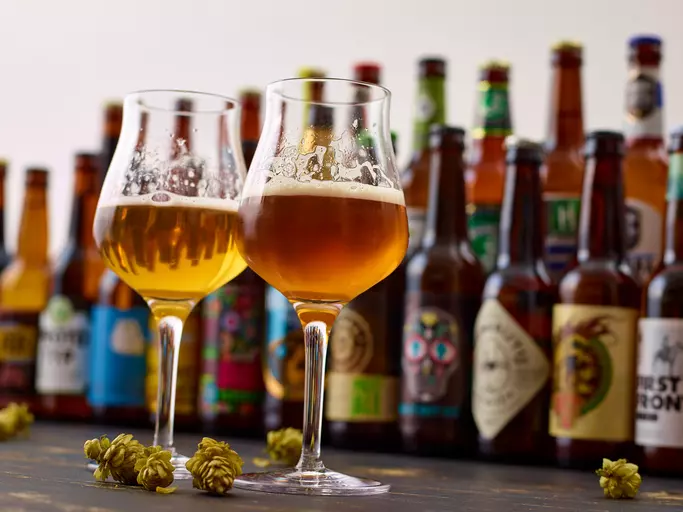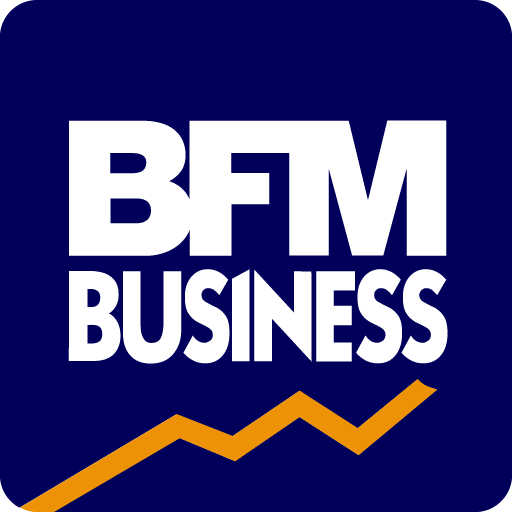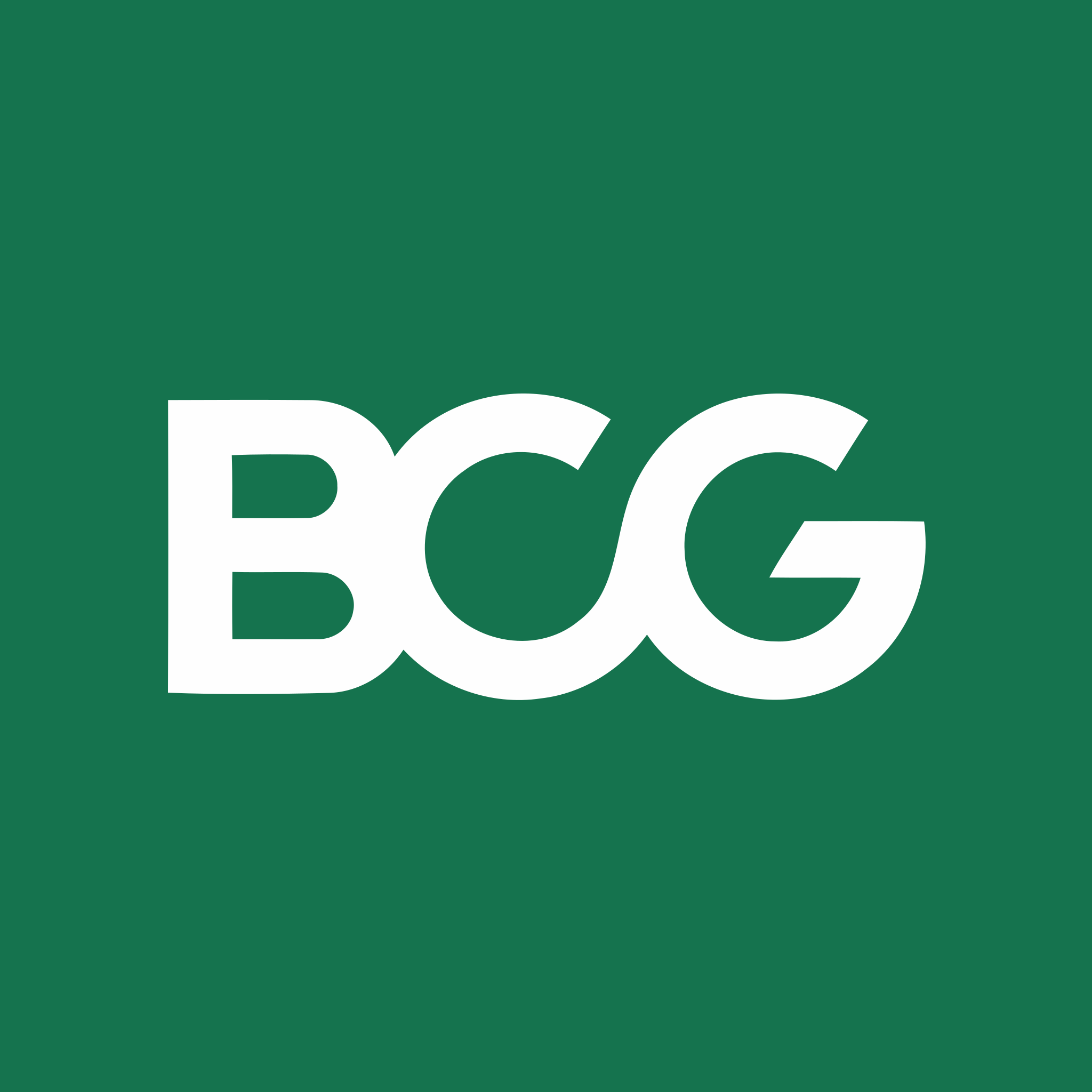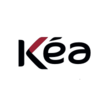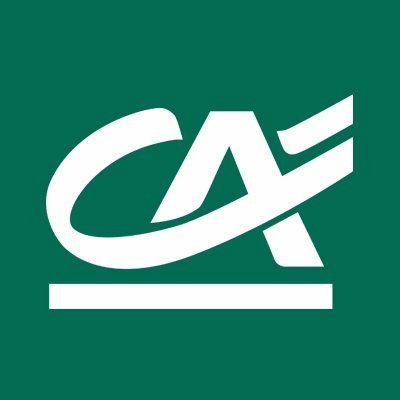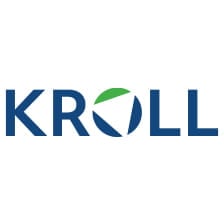Detailed content of our market study
 Inforamtion
Inforamtion
- Number of pages : 35 pages
- Format : Digital and PDF versions
- Last update :
 Summary and extracts
Summary and extracts
1 Market Summary
1.1 Definition and presentation
The size of the global beer market will grow from USD 851.15 billion in 2024 to USD 1,172.13 billion by 2032, with a compound annual growth rate (CAGR) of 4.03% during the forecast period.Europe dominated the market with a 33.77 percent share in 2023. Beer is one of the most popular beverages globally compared to any other alcoholic beverage and is gaining immense popularity, especially among Millennials and Generation Z, due to its various formulations, varieties, and flavor offerings.
Between 2023 and 2029, the value of the European beer market shows steady growth, rising from $277.38 billion to $372.99 billion. Alcoholic beverages play an important role in all European countries and are an integral part of the region's culture, heritage and nutrition. The European Union is one of the leading beer-producing areas in the world. L'alcohol industry in Europe is a diverse sector, composed mainly of small and medium-sized enterprises, including microbreweries and breweries that operate locally, regionally or nationally.
From 2023 to 2029, the Italian market is projected to grow steadily, with an overall increase of about 35 percent and a compound annual growth rate (CAGR) in line with that of Europe of just over 5 percent. Per capita consumption of beer in Italy has increased significantly, rising by more than 11 percent, showing a growing interest among consumers and a positive market trend. In terms of market structure, the number of companies active in beer production in Italy has grown significantly, showing an increase of 76.5 percent in six years, as well as the number of employees operating with an increase of 25,2%.
1.2 The global market
The global beer market size was estimated at US$***.** billion in **** and is expected to grow from US$***.** billion in **** to US$*,***.** billion by ****, with a compound annual growth rate (***) of *.**% during the forecast period. Europe dominated the beer market with a market share of **.** percent in ****. Beer is one of the most popular beverages globally compared to any other alcoholic beverage and is gaining immense popularity, especially among Millennials and Generation Z, due to its various formulations, varieties, and flavor offerings. In the past, flavored fermented beverages were consumed mainly in regions such as Europe and North America, but in recent times demand has grown exponentially worldwide. This factor has positively influenced the entire business. The emergence of new brewing technologies in developing economies has also positively influenced customers' consumption patterns. In addition, consumers are looking for innovative alcoholic beverages that come in a variety of flavors, which is driving the growth of the global beer market. Asia-Pacific is the second largest market. The region has huge potential for liquor producers and its production worldwide. The regional market is led by countries such as India, China, Australia and others, where consumers are increasing alcohol consumption. According to Anheuser-Busch InBev, the ...
1.3 The European market
Between **** and ****, the value of the European beer market shows steady growth from $***.** billion to $***.** billion. The compound annual growth rate (***) of *.** percent confirms that the value of the European beer market between **** and **** increases steadily and sustained. This growth rate is consistent with the **.* percent increase observed during the period.
Alcoholic beverages play an important role in all European countries and are an integral part of the region's culture, heritage and nutrition. The European Union is one of the leading beer-producing areas in the world. According to data from Brewers of Europe, beer consumption in Europe in **** was ***,***,*** hectoliters, showing a minimal increase of *.** percent from the previous year. In terms of structure, the alcohol industry in Europe is a diversified sector, composed mainly of small and medium-sized enterprises, including microbreweries and breweries that operate locally, regionally or nationally. It also includes major European breweries that are world leaders in their fields. The emergence of new microbreweries and small breweries in recent years is a significant sign of the industry's potential for innovation. The overall alcohol content and harmful use of alcohol in Europe have decreased, as some consumers are switching to low-alcohol products and non-alcoholic varieties in this category. ...
1.4 The Italian market
The Italian beer market has gone through significant changes in recent years, marking an overall growth despite the difficulties caused by the pandemic. When analyzing both the value of production sold and the turnover of brewing companies, a solid recovery emerges, taking the sector to higher levels than in the pre-pandemic period.
The value of production sold increased by **.* percent between **** and ****, from *.** billion to *.** billion. After an initial growth, **** saw a sharp decline to *.** billion, but the sector then recovered quickly, reaching the highest level in the entire period analyzed in ****.
Value of beer production sold [***] Italy, ****-****, in billion € Istat
At the same time, the turnover of beer companies grew by **.* percent between **** and the **** estimate, rising from €*.** billion to €*.** billion. After a decline in **** and a swing in ****-****, the industry showed an acceleration in ****, with growth set to continue in ****. These figures indicate a strong recovery and expansion of the market, supported by increased demand and growth strategies of companies in the industry.
Turnover of companies involved in brewing [***] Italy, ****-****, in billion € Istat
1.5 Imports and Exports
Between **** and ****, Italy experienced growth in beer exports, rising from $***.* million in **** to $***.* million in ****, an increase of **.* percent. However, imports increased more significantly, from $***.* million in **** to $***.* million in ****, an increase of **.* percent. The coverage ratio, which measures the proportion of exports to imports, has remained relatively stable, but still below ** percent, fluctuating between *.** and *.**. This indicates that Italy consistently imports much more than it exports, with a slight improvement in **** (***), followed by a decrease in **** and ****, where the rate dropped to *.**.
Imports, exports and beer coverage rate Italy, ****-****, in millions of US$ UNComtrade
In ****, the United Kingdom is the main recipient of Italian beer exports, accounting for **.** percent of the total, followed by the United States at *.** percent and France at *.** percent. Albania and the Netherlands account for *.**% and *.**%, respectively. China (***) are also significant markets, while the remaining **.** percent of exports are distributed among other countries. Main destination countries for beer exports Italy, ****, in % UNComtrade
In ****, Germany is the main supplier of imported beer to Italy, accounting for **.** percent of imports, followed by Belgium with **.** percent and the Netherlands with *.** percent. Denmark and Poland contribute *.**% and *.**%, respectively. Other relevant countries are France (***), with the remaining *.**% coming from other ...
1.6 Inflation suffered by the sector
In recent years, the beer sector in Italy has faced significant challenges due to inflation, which has affected the entire supply chain, from production to distribution. Rising costs of raw materials, such as barley and hops, have created significant pressure on producers, exacerbated by the ever-increasing energy costs needed to power production processes, such as fermentation and refrigeration. Transportation costs have also increased due to rising fuel prices, negatively affecting distribution in both domestic and foreign markets. Faced with these increases, many breweries have had to pass on some of these costs to the end consumer, leading to a general increase in beer prices, both in supermarkets and on the premises. This has greatly affected consumption habits: many people have reduced the number of purchases or switched to cheaper brands, which has especially penalized craft breweries and premium brands. For small brewers, especially craft brewers, the situation has been particularly difficult, as they do not have the same margins as large companies to be able to absorb the increased costs. Some have tried to respond by reducing production, while others have been forced to close. However, there has been no shortage of creative responses: some companies have focused on innovations in ...
2 Demand analysis
2.1 Overview of demand
Between **** and ****, average household spending on beer increased by ** percent, from €*.** to €*.**. After a moderate growth until ****, **** marked a significant acceleration, with the increase remaining constant until ****.
Average household expenditure item for beer Italy, ****-****, in current &euro Istat
Between **** and ****, beer production in Italy showed an overall growth of *.* percent, rising from **.* to **.* million hectoliters. After a significant contraction in ****, with a drop of *.* percent to **.* million hectoliters, production rose steadily, reaching a peak of **.* million hectoliters in ****. In **** there is a slight decline to **.* million hectoliters. Beer production Italy, ****-****, in millions of hectoliters assobirra
Consumption remained unchanged at **.* million hectoliters. After a contraction in ****, when it fell **.* percent to **.* million hectoliters, there was a recovery in the following two years, culminating in **** with **.* million hectoliters. In ****, however, consumption returned to **** levels. Beer consumption Italy, ****-****, in millions of hectoliters assobirra
Instead, analyzing per capita consumption shows an increase of **.* percent, from **.* to **.* liters per year. After a steady increase until ****, peaking at **.* liters, a decline to **.* liters is observed in ****, probably due to the impact of the pandemic. Thereafter, consumption resumes rapidly, reaching a high of **.* liters in ****, before declining slightly to **.* liters in ****. Per capita consumption of ...
2.2 Geographical distribution of demand
Data on average monthly household spending on beer in Italy show significant geographic variation. Households in the Northeast and Northwest record the highest spending, at *.** euros, while in the South and Islands spending is slightly lower, standing at *.** euros. The Center stands out with the lowest expenditure, at *.** euros, a difference of **.* percent from the northern regions.
In ****, Lombardy emerges as the region with the highest number of beer consumers aged ** and older in Italy, with ****, followed by Lazio (***) have lower consumption. This suggests a distribution of beer consumption related to both population and cultural and socioeconomic factors.
2.3 Demand drivers
In ****, in Italy, beer consumption among people aged ** and older shows a gradual increase with age up to the **-** age group, and then begins to decline. The number of consumers increases significantly among young adults, with *,***,*** consumers in the **-** age group representing the absolute peak. The rate of consumers, per *** people in the same age group, rises from *.* percent among **-**-year-olds to **.* percent among **-**-year-olds, showing a steady increase. After age **, the consumer rate gradually declines, falling to **.* percent among people aged ** and older, a **.* percent reduction from peak consumption.
People aged ** and older who consume beer Italy, ****, in thousands, per *** people with the same characteristics Istat
In ****, the national breakdown of beverage spending in Italy shows a relatively balanced distribution among several categories. Water accounts for ** percent of total spending, followed by wine and soft drinks, both at ** percent. Beer makes up ** percent of spending, while other alcoholic beverages account for ** percent. Sparkling wines have the lowest share, at * percent. These data indicate that Italians distribute their beverage spending among water, wine, and soft drinks almost evenly, with a minor preference for beer and sparkling wines. National distribution of beverage spending Italy, ****, in % ISMEA In ****, demand ...
2.4 Trends in beer demand
In the period between October **** and October ****, the trend of online beer searches in Italy shows an interesting evolution. Starting from an index of ** in October ****, there is a decrease to **.** in December of the same year, followed by a gradual recovery in the following months. The summer of **** marks a peak, with the index reaching **.* in August, then declining slightly in the fall months. A similar behavior is seen in ****, with a new summer peak of ** in August. Overall, comparing October **** (***), there is a *.* percent decrease in the search index. The numbers represent search interest relative to the highest point on the graph in relation to the region and period indicated. A value of *** indicates the highest search frequency of the term, ** indicates half of the searches. A score of *, on the other hand, indicates that not enough data were found for the term.
Trends in online searches for beer Italy, ****-****, index Google Trends, Businesscoot elaboration
Online searches for beer in Italy between **** and **** show an interesting geographic distribution. Sardinia records the highest value, with an index of ***, followed by Friuli-Venezia Giulia (***), show a lower propensity for beer-related online searches.
2.5 New trends in demand
The beer market is undergoing a significant transformation, driven by changes in consumer preferences and an evolution in producers' offerings.
*. Growth of craft and independent beers
Craft beers continue to gain popularity, especially among younger consumers and so-called "beer enthusiasts." Demand is shifting toward locally brewed beers with a strong focus on quality, natural ingredients, and a variety of styles. Craft breweries are experimenting with innovative recipes and bold flavors, often related to local cultures or traditions. This has created a dynamic and fragmented market, where small independent breweries compete with big brands, trying to distinguish themselves with storytelling linked to the local area.
*. Low-alcohol and non-alcoholic beers
With an increasing focus on health and wellness, the demand for low-alcohol and nonalcoholic beers is rising sharply. Many consumers, particularly in younger generations such as millennials and Gen Z, are opting for products that allow them to enjoy the taste of beer without the effect of alcohol. Manufacturers are investing in new technologies to improve the taste of non-alcoholic beers, making them more similar to traditional versions in terms of taste experience.
*. Sustainability and environmentally friendly packaging
Consumers are increasingly concerned about the environmental impact of the products they ...
3 Market structure
3.1 Structure and dynamics of the Italian market
From **** to ****, the number of companies active in brewing in Italy grew significantly. It rose from *** companies in **** to **** in ****, an increase of **.* percent in six years. The growth rate was particularly pronounced between **** and ****, with an increase of *** companies, a sign of strong dynamism in the sector in recent years.
Number of enterprises active in brewing [***] Italy, ****-****, in numbers Istat, Companies Register
In ****, the majority of businesses active in brewing in Italy were limited liability companies, accounting for **.** percent of the total. Sole proprietors, freelancers and the self-employed made up **.** percent, followed by general partnerships (***). Other legal forms, such as cooperatives or joint stock companies, had a much lower weight, with percentages ranging from *.** percent to *.** percent, signaling a clear predominance of SRL and sole proprietorship type business structures. Legal form of companies active in brewing Italy, ****, in % Istat
Between **** and ****, the number of people employed in brewing in Italy increased steadily from **** in **** to **** in ****, a total increase of **.* percent. Despite a slight decline between **** and ****, probably related to general economic factors, growth resumed in ****, peaking in ****. Number of employees working in brewing [***] Italy, ****-****, in numbers Istat
The beer market in Italy shows rapid growth in the ...
3.2 Value Chain
Procurement ofraw materials: Acquisition of key ingredients such as barley, hops, yeast and water. Malting: Barley is transformed into malt through soaking, germination and drying processes. Brewing: Malt is mixed with water, boiled with hops and fermented with yeast to produce beer. Packaging: The beer is filtered, carbonated and packaged in bottles, cans or kegs. Distribution: Beer is transported from the brewery to wholesalers, retailers and restaurants. Marketing and Sales: Branding, promotions and advertising to sell beer to consumers. Retail and Consumption: Beer reaches end consumers through supermarkets, bars, and restaurants.
Diagram of production of one hectoliter of beer
*. Raw materials:
Malt: ** kg Water: *** L Unmalted cereal: * kg Hops: *.** kg Yeast: *** g (***)
*. Preparation process:
The raw materials are placed in the mash tun and the grain mash boiler, where saccharification takes place. Next, the wort is filtered and boiled in the brewing boiler. Wort production: ** L of wort is obtained.
*. Waste and use of by-products:
During the process, trebbie (***) is produced, which can be used as animal feed.
*. Fermentation:
After cooling the wort, fermentation and maturation take place. The yeast is collected (***) and can be used for other uses in the food industry.
*. Packaging stage:
After ...
3.3 Distribution channels
In ****, value sales in Italy's large-scale retail trade (***) were dominated by distillates and spirits, accounting for **.* percent of the total. This was followed by sweet liqueurs with **.* percent, alcoholic aperitifs with **.* percent, and finally bitters with **.* percent. This indicates a clear dominance of distilled spirits and brandies over other categories of alcoholic beverages, highlighting a consumer preference for these products.
Breakdown of categories in total value sales in the large-scale retail trade Italy, ****, in % Federvini
Between **** and ****, value sales in Italy's large-scale retail trade showed growth for alcoholic aperitifs (***). Sales trends by category in the large-scale retail trade Italy, ****-****, in % Federvini
3.4 The main players in the market
The main companies in Italy are as follows:
Ab-Inbev Italia: Anheuser-Busch InBev Italia S.p.A. is the Italian subsidiary of AB InBev, a world leader in beer production. The Italian office is located in Piazza Gae Aulenti n.*, Milan. AB InBev Italia distributes prestigious brands such as Corona, Beck's, Leffe, Tennent's Super, Franziskaner, Hoegaarden, Birra del Borgo and Goose Island. In ****, the company opened its new headquarters in Milan, which also serves as the headquarters for the Central Europe Business Unit, strengthening its presence in the Italian market. Starting January *, ****, AB InBev will have exclusive rights to distribute and promote San Miguel products in Italy, further expanding its brand portfolio in the country.
Heineken: Founded in **** in Amsterdam by Gerard Adriaan Heineken, it is one of the world's leading brewing companies. The company owns more than *** breweries in more than ** countries, and is best known for its light lager beer. Among its most famous brands are Amstel, Desperados, Sol, and Birra Moretti. It developed its unique A-Yeast yeast in ****, which is a key element in the beer's distinctive taste, with delicate fruity notes. Despite its global expansion, it continues to maintain strong ties to its origins as a family ...
4 Supply analysis
4.1 Analysis and type of supply
In ****, Heineken dominated the Italian beer market with ** percent of the total released for consumption. Birra Peroni ranked second with **.* percent, while In Bev Italia followed with *.* percent. Carlsberg and Birra Castello have more modest shares of *.* percent and *.* percent, respectively. Minor producers, such as Birra Lucana and Hausbrandt, account for only a small fraction (***). "Non-member third-party imports" make up a significant portion of the market, accounting for **.* percent, far outpacing other local producers.
Beer released for consumption Italy, ****, in % Assobirra
The beer market offers a wide range of products, each characterized by different production styles, ingredients and tastes. The table below presents the main beer categories, each with a brief description and some well-known examples. This diversification responds to different consumer preferences and global trends toward innovation and quality.
4.2 Price trends in the market
Between September **** and September ****, the Italian Beer Consumer Price Index increased from ***.* to ***.*, with an overall growth of **.* percent. It peaked in January **** at ***.*, followed by a slight decline in the following months, and then stabilized between ***.* and ***.* during the summer of ****. The general trend shows a steady increase in prices in ****, while in **** the pace of growth seems to slow down with slight fluctuations.
Consumer price index of Beer [***] for the whole community (***) - monthly data Italy, ****-****, index Istat
From **** to ****, the consumer price index for beer in Italy increased by **.* percent, from ***.* to ***.*. Between **** and ****, prices remained relatively stable, with minimal changes around the base value (***). However, there was a sharp increase of *.* percent in **** from ****, followed by another significant increase of **.* percent in ****.
Consumer price index of Beer [***] for the whole community (***) - annual averages Italy, ****-****, index Istat
Over the period ****-****, Italy recorded an average price growth of *.* percent. Food showed an increase of *.* percent, followed by non-alcoholic beverages with an increase of *.* percent. Alcoholic beverages had a growth of *.* percent, while tobacco showed a minimal increase of *.* percent. Compared with the overall index, foodstuffs showed a higher change, while alcoholic beverages and tobacco had ...
4.3 New supply trends
The beer market is undergoing a major transformation, driven by several emerging trends that are redefining consumer supply and expectations. These trends are the result of changing demographics, food preferences, and sustainability. Here are the major trends in beer supply:
*. Craft beers and microbreweries
In recent years, there has been an exponential growth of craft breweries, which offer beers with unique flavors and distinctive production processes. Consumers, especially millennials, are looking for authentic experiences and local products, so they prefer beers brewed on a small scale over industrial brands. The variety of beer styles is a strength of microbreweries, which experiment with unusual ingredients, aromatic hops, and aging methods such as barrel-aging.
*. Low-alcohol and nonalcoholic beers
A significant trend is the growing demand for low-alcohol or nonalcoholic beers, driven by a focus on health and wellness. Consumers, especially younger ones, are becoming increasingly aware of alcohol consumption and are looking for alternatives that allow them to enjoy the taste of beer without the side effects. This has led manufacturers to improve the quality of non-alcoholic beers, removing the old stigma that labeled them as less tasty.
*. Sustainability and organic ingredients
Sustainability is another key driver for the beer ...
5 Rules and regulations
5.1 Market regulation
Excise taxes on alcoholic beverages in Italy between **** and **** show a seesaw trend. After an initial increase from **** to ****, where they rise from *** million to *** million (***).
Excise taxes on alcoholic beverages Italy, ****-****, in millions of € Assobirra
In Italy, the regulation of beer is quite articulated and covers different aspects, from production to sale. Laws and regulations ensure quality, safety and correct information for consumers. Beer is classified mainly according to its alcohol content. Legislative Decree No. *** of January **, **** establishes the different categories: non-alcoholic beer (***). Another important distinction concerns craft beer, defined by Legislative Decree No. *** of ****, which regulates its production: it must be obtained without pasteurization or microfiltration and must have a production of less than ***,*** hectoliters per year. Craft beer has seen a great development and is appreciated for its quality, often linked to local tradition. As far as production is concerned, breweries must comply with strict hygiene and health regulations imposed by EC Regulation No. ***/**** on the hygiene of foodstuffs. This regulation requires facilities to maintain high standards of cleanliness and safety to avoid contamination. European regulations are enforced to ensure that the product is safe for consumption by regulating every step of the process, from ingredient selection ...
6 Positioning of actors
6.1 Market segmentation
- Heineken
- Birra Peroni
- Birra Forst
- Carlsberg
- Birra Castello
- Birra Menabrea
- Birra Amarcord
- Birrificio del Ducato
- Birra del Borgo
- Birra Semedorato
- AB InBev
All our studies are available online in PDF format
Take a look at an example of our research on another market!
 Choosing this study means :
Choosing this study means :
Access to more than 35 hours of work
Our studies are the result of over 35 hours of research and analysis. Using our studies allows you to devote more time and added value to your projects.
Benefit from 6 years' experience and over 1,500 industry reports already produced
Our expertise enables us to produce comprehensive studies in all sectors, including niche and emerging markets.
Our know-how and methodology enable us to produce reports that offer unique value for money.
Access to several thousand articles and paid-for data
Businesscoot has access to all the paid economic press as well as exclusive databases to carry out its market research (over 30,000 articles and private sources).
To enhance our research, our analysts also use web indicators (semrush, trends, etc.) to identify market trends and company strategies. (Consult our paying sources)
Guaranteed support after your purchase
A team dedicated to after-sales service, to guarantee you a high level of satisfaction. +44 238 097 0676
A digital format designed for our users
Not only do you have access to a PDF, but also to a digital version designed for our customers. This version gives you access to sources, data in Excel format and graphics. The content of the study can therefore be easily retrieved and adapted for your specific needs.
 Our offers :
Our offers :
the beer market | Italy
- What are the figures on the size and growth of the market?
- What is driving the growth of the market and its evolution?
- What is the positioning of companies in the value chain?
- Data from several dozen databases
5 reports pack (-15%) IT Italy
- 5 reports at €75.6 excluding VAT per study to choose from our Italian catalogue for 12 months
- Save 15% on additional studies purchased
- Choose to be refunded any unused credit at the end of the 12-month period (duration of the pack)
See the terms and conditions of the pack and the refund of unused credit.
